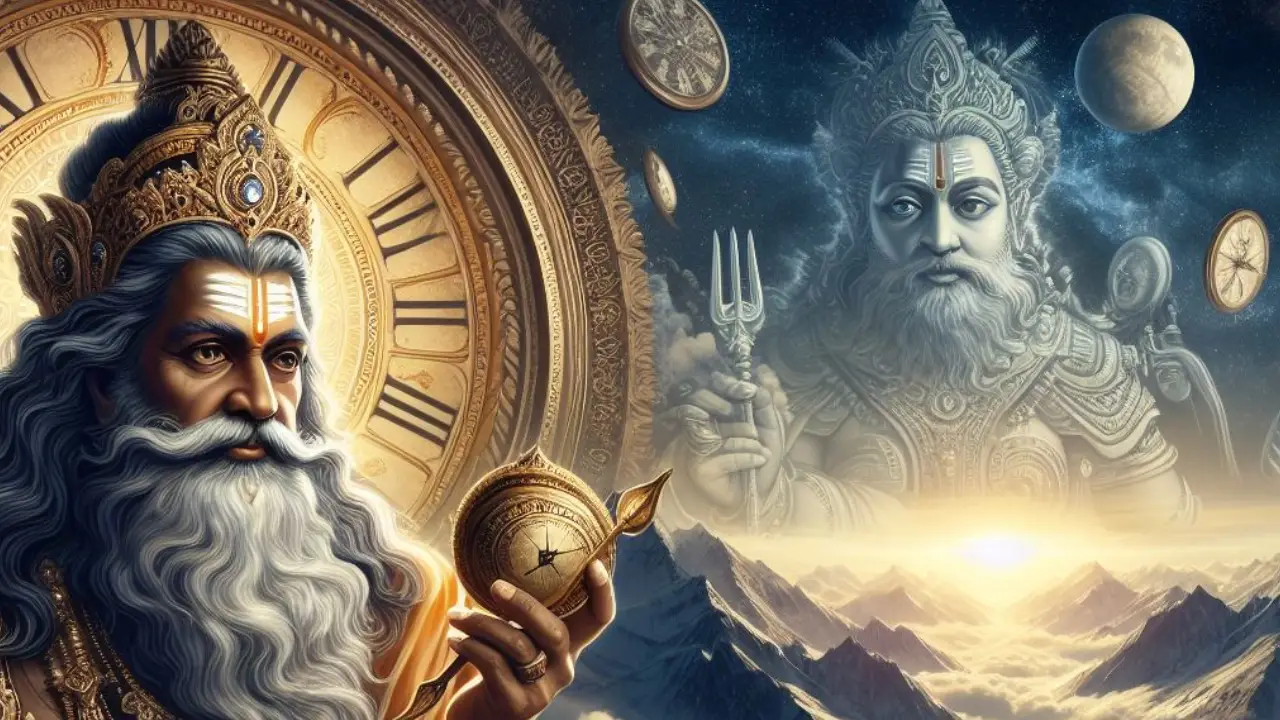In the vast expanse of Hindu mythology, the divine and cosmic dance of Lord Brahma unfolds, intricately interweaving the essence of time into the very fabric of the cosmos. In this exploration, we delve into the profound concept of time, a dynamic force that shapes the universe, guided by the hands of the supreme creator.
The Celestial Maestro
Lord Brahma, with his four heads symbolizing the four Vedas, stands as the celestial maestro entrusted with the sacred task of creation. His cosmic dance, a ballet of cosmic proportions, is not merely a physical expression. It is however a metaphysical revelation of the intricate dance between existence and non-existence.
The Genesis of Temporality
At the core of Hindu cosmogony lies the trinity of Brahma, Vishnu, and Shiva. Brahma, the progenitor, births the cosmos from the cosmic waters, setting the stage for the unfolding drama of creation. Time, in this context, emerges as a river flowing through the continuum of cosmic events.
The Eternal Tapestry
Brahma’s dance is not a solitary endeavor; it is a duet with Saraswati, the goddess of knowledge and wisdom. Together, they perform their divine dance on the lotus that emerges from the navel of Lord Vishnu. This cosmic ballet symbolizes the harmonious interplay between creation, preservation, and dissolution. It is an eternal cycle that resonates with the heartbeat of the universe.
The Weaving of Kalpas and Yugas
Within the cosmic dance of Lord Brahma, time is further partitioned into vast cycles known as Kalpas, representing the grand cosmic day of Brahma. Yugas, on the other hand, are smaller temporal units governing the rise and fall of civilizations. The cosmic rhythm, expressed through the ebb and flow of Yugas, encapsulates the cyclical nature of existence.
Time as Divine Play
In the intricate philosophy of Hinduism, the concept of Lila, the divine play, comes to the forefront. The universe is perceived as a cosmic drama, with Lord Brahma as the primary playwright. Time, in this context, becomes the artistic medium through which the divine orchestrates the destinies of gods, mortals, and all entities within the cosmic stage.
The Interconnected Threads
Brahma’s dance extends beyond the physical realm, intertwining with the cosmic web of fate and destiny. Each thought, action, and consequence serves as a thread in this intricate tapestry, suggesting a seamless connection between the microcosm and the macrocosm, the individual and the cosmos.
The Paradoxical Creator
While Lord Brahma is venerated as the creator, Hindu theology introduces the paradox that he is not the ultimate reality. The Upanishads guide seekers to recognize the formless and eternal Brahman as the ultimate reality from which all things emanate, emphasizing the transient nature of Brahma’s creation.
Timelessness Within the Temporal
The cosmic dance of Lord Brahma, bound by the cycles of time, offers a glimpse into the transcendence of the divine. Within the temporal confines of creation, the essence of the eternal persists, inviting contemplation on the timeless nature of existence.
Invitation to Contemplate
As we navigate the enigma of Lord Brahma’s dance and the intricate concept of time, it calls us to contemplate our own existence. The cyclical nature of time serves as a mirror, reflecting the impermanence of the material world and prompting introspection.
Embracing the Present
Amid life’s chaos, the wisdom embedded in Hindu mythology encourages us to embrace the present moment. Understanding the dance of time allows us to navigate the complexities of existence with grace and mindfulness. It awakens a sense of connection to the eternal now.
Your Reflections Matter
What are your musings on the cosmic dance of Lord Brahma and the timeless concept of time in Hindu mythology? Share your insights, reflections, and questions in the comments section below. Let’s engage in a profound conversation about the eternal dance that shapes the very essence of our reality.

